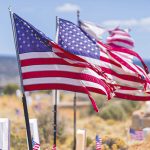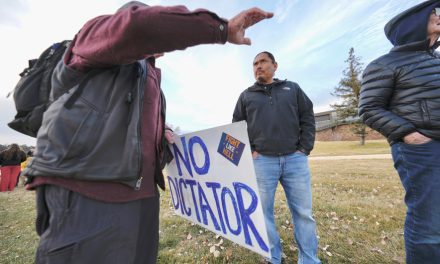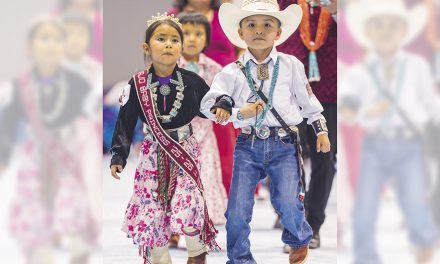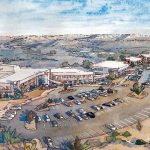
Opinion | If you want to protect children, you cannot defend mascots
By Cheryl Crazy Bull
Editor’s note: Cheryl Crazy Bull serves as president and CEO of the American Indian College Fund.
“In high school, my mascot was the ‘Redskins’ and I had to watch my classmates make posters saying we are going to ‘skin’ our sports opponents. The other teams would make posters that said they are going to send us home on a ‘trail of tears.’”
Amanada Anderson (Choctaw) was a college student when she relayed her experiences during the 2014 Student Environment Listening Sessions held by the White House Initiative on American Indian and Alaska Native Education (WHIAIANE). It is more than a decade later, and Native youth and college students are still living in a world eager to demean them for the sake of entertainment and stereotype-induced ego boosts.
Over the weekend, President Trump made statements demanding that the Washington Commanders and Cleveland Guardians revert to their previous, racially based team names. In his own words, the President wants to “Make Indians Great Again.”
Yet studies conducted by previous administrations, such as the one that included Anderson’s experiences, show that Indigenous people are already great – with accomplished histories and even modern-day achievements.
Psychologist, researcher, and professor, Dr. Stephanie Fryberg (Tulalip) at Weinberg College of Arts and Sciences at Northwestern University in Chicago, said, “Invisibility is the modern form of racism against Native Americans.”
Fryberg focused her research on this issue, including mascots and the other toxic stereotypes and false narratives about Indigenous people to fill the void of knowledge about them: in fact, more than 70% of Americans rarely encounter or receive accurate information about Native Americans.
Sports mascots are one of the few forms of representation that most people are aware of. Using caricatures of Native people as mascots reinforces negative misconceptions of American Indians. And these mascots are especially damaging to youth, both Native and non-Native alike, research shows.
A 2014 article by the Center for American Progress quoted research illustrating how Native mascots can cause American Indian and Alaska Native youth to internalize cultural abuse. For Native children in schools with racist mascots, this can lead to stress, anxiety, confusion, or embarrassment, making them feel uncomfortable in their learning environment. Over the years, Native students have provided numerous testimonies about how these images encourage bullying and teasing and perpetuate negative stereotypes, held by other students and teachers alike. And college students are not safe from this problem, either.
When Dr. Fryberg conducted a national study of Native people for whom being Native is part of their “identity centrality” – i.e. those who participate in their culture from tribal elections to powwows or speaking their languages – 57% were offended by sports mascots, and more were particularly offended by the name “Redskins.” Sixty-eight percent of those between the ages of 18 and 30 opposed the team’s name. Unlike non-Native Americans, they are aware the team’s name is a dictionary-defined slur.
Many college students, or students seeking to attend college, may be stuck dealing with a similarly named mascot. A student’s choice of institution is affected by many factors, and they may have no other option but to attend a college or university with a mascot whose representation of Native people encourages, if not ensures, a hostile learning environment. As the WHIAIANE states, “The stereotyping of any racial, ethnic, religious or other groups when promoted by our public educational institutions, teach all students that stereotyping of minority groups is acceptable, a dangerous lesson in a diverse society. Schools have a responsibility to educate their students; they should not use their influence to perpetuate misrepresentations of any culture or people.”
Dr. Fryberg’s research backs up this claim with evidence that, “when exposed to Native mascots, white college students are more likely to discriminate against other people of color.”
Mascots are not about team names. Mascots that are not dehumanizing ensure the safety and prosperity of our children and the future of our communities while providing fans with a name in which everyone can take pride.
If the president wants to make Indians great again, he might start by encouraging Congress to fully fund the 37 tribal colleges and universities and visit them to learn about our incredible students, communities, histories, and cultures.
Get instant access to this story by purchasing one of our many e-edition subscriptions HERE at our Navajo Times Store.








 Highway 264,
Highway 264, I-40, WB @ Winslow
I-40, WB @ Winslow